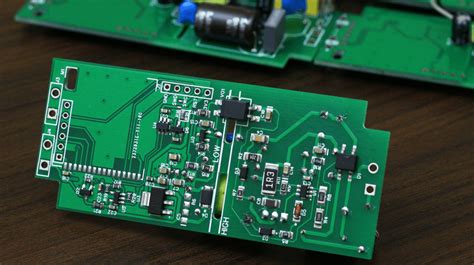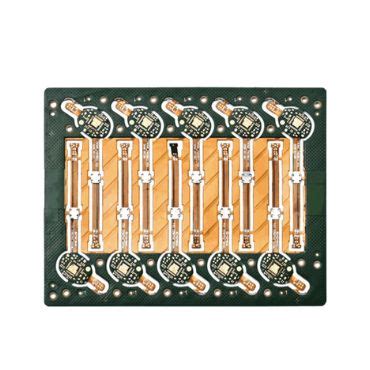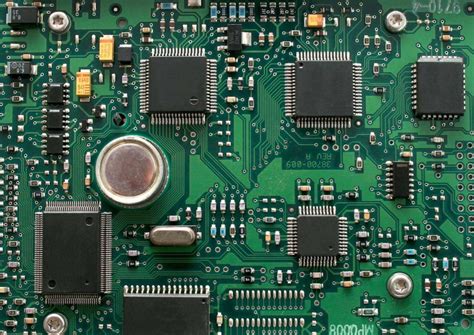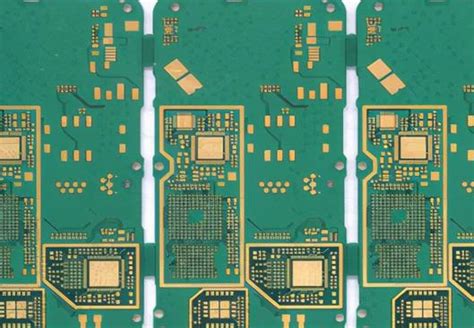Pcb led
Designing Efficient PCB Layouts for LED Applications
Designing efficient PCB layouts for LED applications is a critical aspect of modern electronics engineering. The process involves meticulous planning and execution to ensure optimal performance, longevity, and reliability of the LED circuits.
To begin with, understanding the fundamental requirements of LED applications is essential.
LEDs, or Light Emitting Diodes, are semiconductor devices that emit light when an electric current passes through them. They are widely used in various applications, from simple indicator lights to complex display systems, due to their energy efficiency, long lifespan, and compact size.
One of the primary considerations in designing PCB layouts for LED applications is thermal management.
LEDs generate heat during operation, and excessive heat can degrade their performance and reduce their lifespan. Therefore, it is crucial to incorporate effective thermal management strategies in the PCB design. This can be achieved by using materials with high thermal conductivity, such as aluminum or copper, for the PCB substrate. Additionally, designing the PCB with adequate thermal vias and heat sinks can help dissipate heat more efficiently.
Another important aspect is the electrical design of the PCB. Ensuring proper current distribution is vital for the consistent performance of LEDs.
This involves designing appropriate trace widths and spacing to handle the current requirements of the LEDs without causing excessive voltage drops or overheating. Moreover, incorporating current-limiting resistors or constant current drivers can help maintain a stable current flow through the LEDs, preventing them from being damaged by overcurrent.
The layout of the components on the PCB also plays a significant role in the overall performance of the LED circuit.
Placing the LEDs in a uniform pattern can ensure even light distribution, which is particularly important in applications such as backlighting or display panels. Additionally, minimizing the distance between the power source and the LEDs can reduce power losses and improve efficiency. It is also advisable to keep high-frequency components and sensitive analog circuits separate to avoid electromagnetic interference (EMI) issues.
Furthermore, the choice of PCB design software can greatly influence the efficiency of the design process.
Modern PCB design tools offer advanced features such as automated routing, thermal analysis, and design rule checks, which can help streamline the design process and ensure the final product meets the required specifications. Utilizing these tools can save time and reduce the likelihood of errors in the design.
In addition to the technical aspects, considering the manufacturability of the PCB is also important.
Designing for manufacturability involves creating a PCB layout that can be easily and cost-effectively produced using standard manufacturing processes. This includes adhering to standard design rules, such as minimum trace widths and spacing, and ensuring that the PCB can be easily assembled and tested.
Finally, thorough testing and validation of the PCB design are essential before mass production.
This involves conducting various tests, such as thermal cycling, electrical performance testing, and reliability testing, to ensure the PCB meets the required performance and durability standards. Any issues identified during testing should be addressed and rectified to avoid potential failures in the final product.
In conclusion, designing efficient PCB layouts for LED applications requires a comprehensive understanding of thermal management, electrical design, component placement, and manufacturability. By carefully considering these factors and utilizing advanced design tools, engineers can create high-performance, reliable, and cost-effective LED circuits that meet the demands of modern applications.
Innovative Uses of PCB LEDs in Modern Electronics
Printed Circuit Board (PCB) LEDs have become a cornerstone in the evolution of modern electronics, offering a myriad of innovative applications that enhance both functionality and aesthetics. As technology continues to advance, the integration of PCB LEDs into various devices has revolutionized the way we perceive and interact with electronic systems. This article delves into the multifaceted uses of PCB LEDs, highlighting their significance in contemporary electronic design.
To begin with, PCB LEDs are extensively utilized in consumer electronics, where their compact size and energy efficiency make them ideal for a wide range of applications.
Smartphones, for instance, employ PCB LEDs for backlighting displays, providing bright and uniform illumination while consuming minimal power. This not only extends battery life but also ensures a superior visual experience for users. Similarly, in televisions and computer monitors, PCB LEDs are used to achieve high-definition displays with vibrant colors and sharp contrasts, enhancing the overall viewing experience.
Moreover, the automotive industry has embraced PCB LEDs for their durability and versatility.
Modern vehicles are equipped with LED headlights, taillights, and interior lighting, all of which are mounted on PCBs. These LEDs offer several advantages over traditional lighting solutions, including longer lifespan, lower energy consumption, and improved safety. For example, LED headlights provide better illumination of the road ahead, reducing the risk of accidents during nighttime driving. Additionally, the ability to customize LED lighting allows manufacturers to create distinctive and aesthetically pleasing designs, setting their vehicles apart in a competitive market.
In the realm of industrial applications, PCB LEDs play a crucial role in enhancing operational efficiency and safety.
Factories and warehouses often utilize LED lighting systems to ensure well-lit workspaces, which are essential for maintaining productivity and preventing accidents. Furthermore, PCB LEDs are employed in machinery and equipment to provide status indicators and alerts, enabling operators to monitor performance and address issues promptly. The robustness of PCB LEDs ensures that they can withstand harsh industrial environments, making them a reliable choice for various applications.
Transitioning to the field of medical technology, PCB LEDs have made significant contributions to the development of advanced diagnostic and therapeutic devices.
Medical imaging equipment, such as MRI and CT scanners, relies on PCB LEDs for precise illumination, which is critical for obtaining accurate images. Additionally, surgical instruments and endoscopes are equipped with LED lighting to enhance visibility during procedures, thereby improving patient outcomes. The compact nature of PCB LEDs allows for their integration into small, handheld devices, facilitating the creation of portable medical tools that can be used in diverse settings.
Furthermore, the rise of smart home technology has seen an increased adoption of PCB LEDs in various household devices.
Smart lighting systems, for example, utilize PCB LEDs to offer customizable lighting solutions that can be controlled remotely via smartphones or voice assistants. This not only provides convenience but also contributes to energy savings by allowing users to optimize their lighting usage. Additionally, PCB LEDs are found in smart appliances, such as refrigerators and washing machines, where they serve as indicators and enhance the user interface.
In conclusion, the innovative uses of PCB LEDs in modern electronics underscore their importance in driving technological advancements across multiple industries. From consumer electronics and automotive applications to industrial and medical uses, PCB LEDs offer unparalleled benefits in terms of efficiency, durability, and versatility. As technology continues to evolve, it is evident that PCB LEDs will remain integral to the development of cutting-edge electronic systems, shaping the future of how we interact with and benefit from technology.
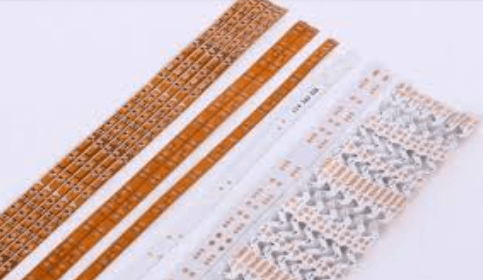
Troubleshooting Common Issues in PCB LED Circuits
Printed Circuit Board (PCB) LED circuits are integral to a wide range of modern electronic devices, from simple household gadgets to complex industrial machinery. Despite their widespread use and generally reliable performance, these circuits can occasionally encounter issues that require troubleshooting. Understanding common problems and their solutions is essential for maintaining the functionality and longevity of PCB LED systems.
One of the most frequent issues in PCB LED circuits is the occurrence of open circuits.
An open circuit can result from a broken trace on the PCB, a poorly soldered joint, or a damaged component. To diagnose an open circuit, one should first visually inspect the PCB for any obvious signs of damage, such as cracks or burnt areas. If no visible damage is found, using a multimeter to check for continuity can help identify the exact location of the break. Once located, repairing the trace or re-soldering the joint can often resolve the issue.
Another common problem is short circuits, which can be caused by solder bridges, conductive debris, or component failures.
Short circuits can lead to excessive current flow, potentially damaging the LED or other components in the circuit. To troubleshoot a short circuit, it is advisable to start by inspecting the PCB under magnification to identify any unintended connections between traces or pads. Removing any solder bridges or debris and replacing faulty components can mitigate this issue. Additionally, employing proper soldering techniques and maintaining a clean work environment can prevent short circuits from occurring in the first place.
LEDs themselves can also be a source of trouble.
LEDs have a finite lifespan and can fail due to prolonged use, excessive current, or thermal stress. If an LED is not lighting up, it is important to check whether it is receiving the correct voltage and current. Using a multimeter to measure the voltage drop across the LED can help determine if it is functioning properly. If the LED is found to be faulty, replacing it with a new one of the same specifications is necessary. Ensuring that the circuit design includes appropriate current-limiting resistors can also help protect LEDs from premature failure.
Thermal management is another critical aspect of maintaining PCB LED circuits.
LEDs generate heat during operation, and inadequate heat dissipation can lead to thermal runaway, where the LED’s temperature increases uncontrollably, causing it to fail. To address thermal issues, one should ensure that the PCB design includes adequate thermal vias and heat sinks to facilitate heat dissipation. Additionally, using thermal interface materials and ensuring proper airflow around the PCB can help manage heat effectively.
Power supply issues can also affect the performance of PCB LED circuits.
An unstable or incorrect power supply can cause flickering, dimming, or complete failure of the LEDs. Verifying that the power supply provides a stable voltage and current within the specified range for the LEDs is crucial. If power supply issues are suspected, checking the power source with a multimeter and ensuring that all connections are secure can help identify and resolve the problem.
In conclusion, troubleshooting PCB LED circuits involves a systematic approach to identifying and resolving common issues such as open circuits, short circuits, faulty LEDs, thermal management problems, and power supply inconsistencies. By employing careful inspection, appropriate diagnostic tools, and preventive measures, one can maintain the reliability and performance of PCB LED systems. Understanding these troubleshooting techniques is essential for anyone working with PCB LED circuits, ensuring that they continue to function effectively in their intended applications.
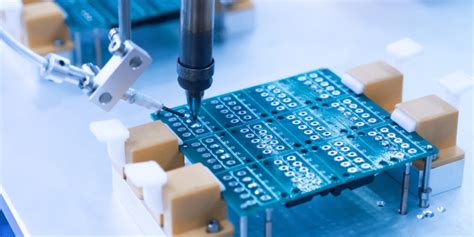
The Future of PCB LED Technology in Smart Devices
The integration of Printed Circuit Board (PCB) LED technology into smart devices represents a significant leap forward in the evolution of modern electronics. As the demand for more efficient, compact, and versatile devices continues to grow, PCB LEDs are emerging as a critical component in meeting these needs. This technology not only enhances the functionality of smart devices but also contributes to their aesthetic appeal and energy efficiency.
One of the primary advantages of PCB LED technology is its ability to provide high levels of illumination while consuming minimal power.
This is particularly important in the context of smart devices, where energy efficiency is paramount. By reducing power consumption, PCB LEDs extend the battery life of devices such as smartphones, tablets, and wearable technology. This, in turn, enhances user experience by reducing the frequency of charging and increasing the overall convenience of these devices.
Moreover, the compact nature of PCB LEDs allows for greater design flexibility.
Traditional lighting solutions often require bulky components that can limit the design possibilities of smart devices. In contrast, PCB LEDs can be seamlessly integrated into the circuitry of a device, enabling manufacturers to create thinner, lighter, and more aesthetically pleasing products. This is especially beneficial in the development of wearable technology, where space is at a premium and the form factor is crucial to user comfort and acceptance.
In addition to their energy efficiency and compact size, PCB LEDs offer superior durability and longevity compared to conventional lighting solutions.
The solid-state nature of LEDs means they are less prone to damage from shock and vibration, making them ideal for use in portable and wearable devices that are subject to frequent movement and handling. Furthermore, the long lifespan of LEDs reduces the need for frequent replacements, contributing to the sustainability of smart devices by minimizing electronic waste.
The versatility of PCB LED technology also extends to its applications in smart home devices.
From smart lighting systems to advanced home security solutions, PCB LEDs play a pivotal role in enhancing the functionality and user experience of these products. For instance, smart lighting systems equipped with PCB LEDs can be programmed to adjust brightness and color temperature based on the time of day or user preferences, creating a more comfortable and personalized living environment. Similarly, in home security systems, PCB LEDs can be used to provide discreet yet effective illumination for cameras and sensors, ensuring optimal performance without drawing unnecessary attention.
As we look to the future, the potential for PCB LED technology in smart devices is vast.
Advances in materials science and manufacturing techniques are continually improving the performance and cost-effectiveness of PCB LEDs. Emerging trends such as the Internet of Things (IoT) and the proliferation of connected devices further underscore the importance of efficient, reliable, and versatile lighting solutions. PCB LEDs are well-positioned to meet these demands, offering a combination of energy efficiency, durability, and design flexibility that is unmatched by traditional lighting technologies.
In conclusion, the future of PCB LED technology in smart devices is bright. As manufacturers continue to innovate and push the boundaries of what is possible, PCB LEDs will undoubtedly play a central role in shaping the next generation of smart devices. By enhancing energy efficiency, enabling sleek and compact designs, and providing reliable performance, PCB LEDs are set to become an indispensable component in the ever-evolving landscape of modern electronics.

